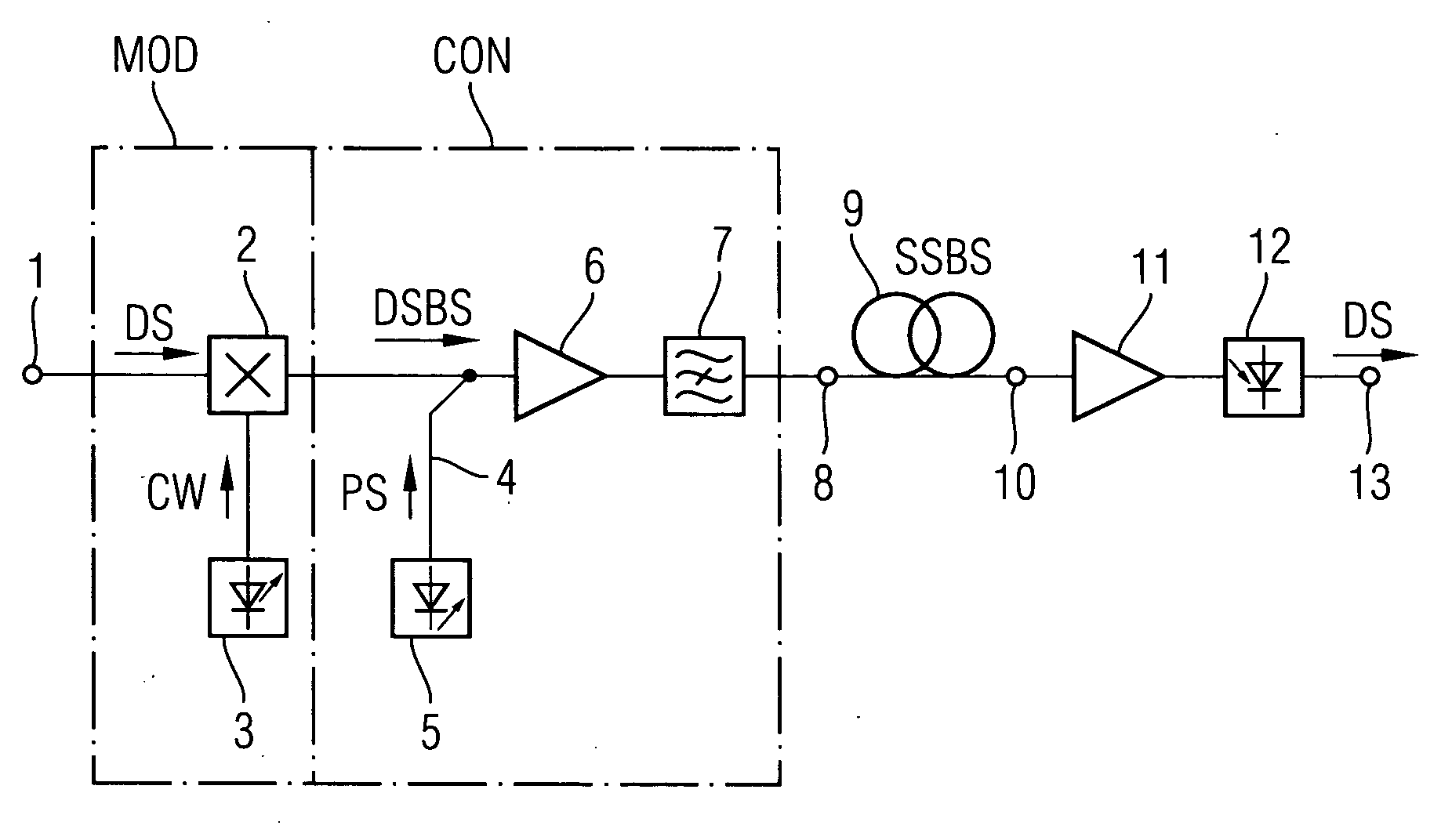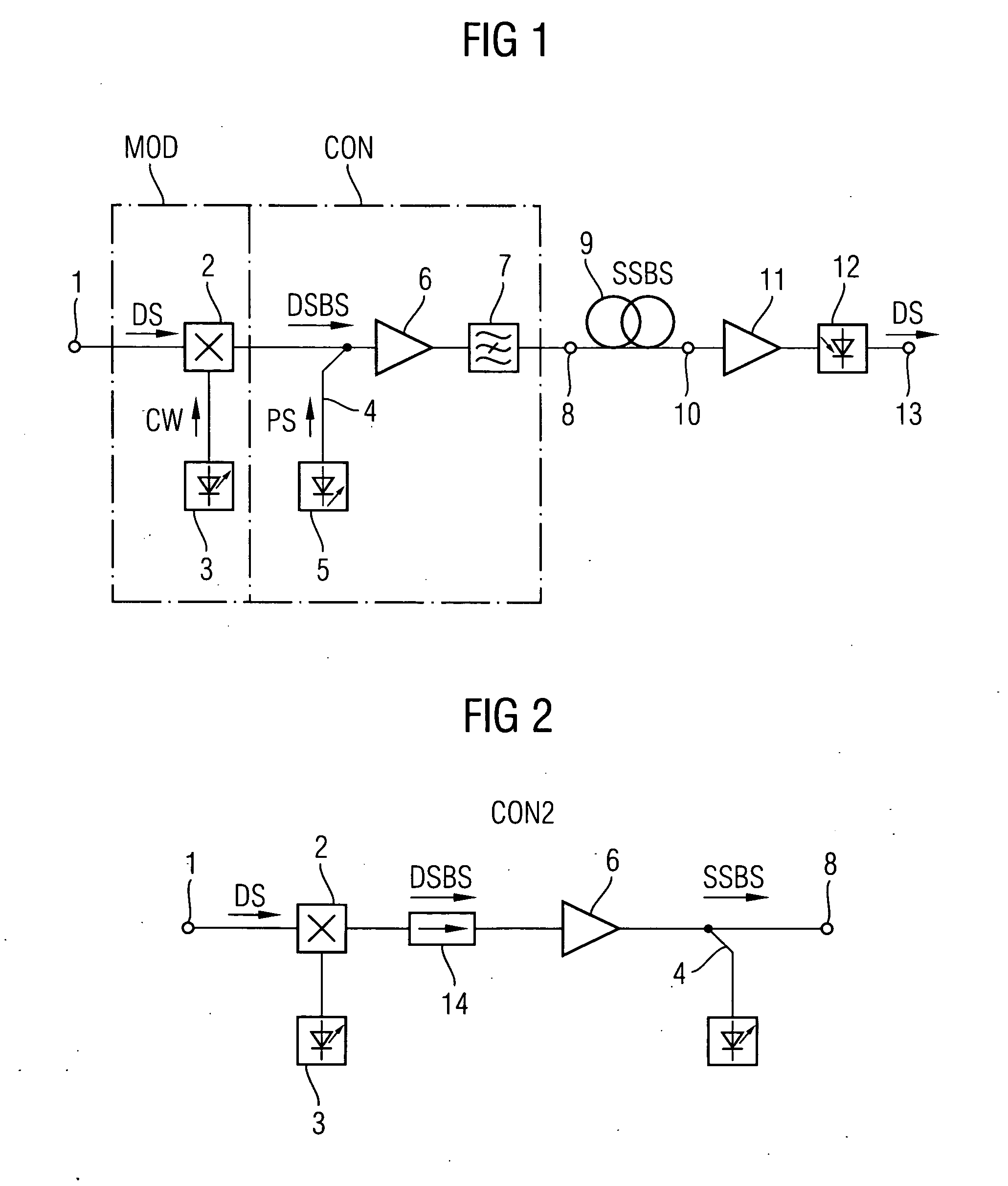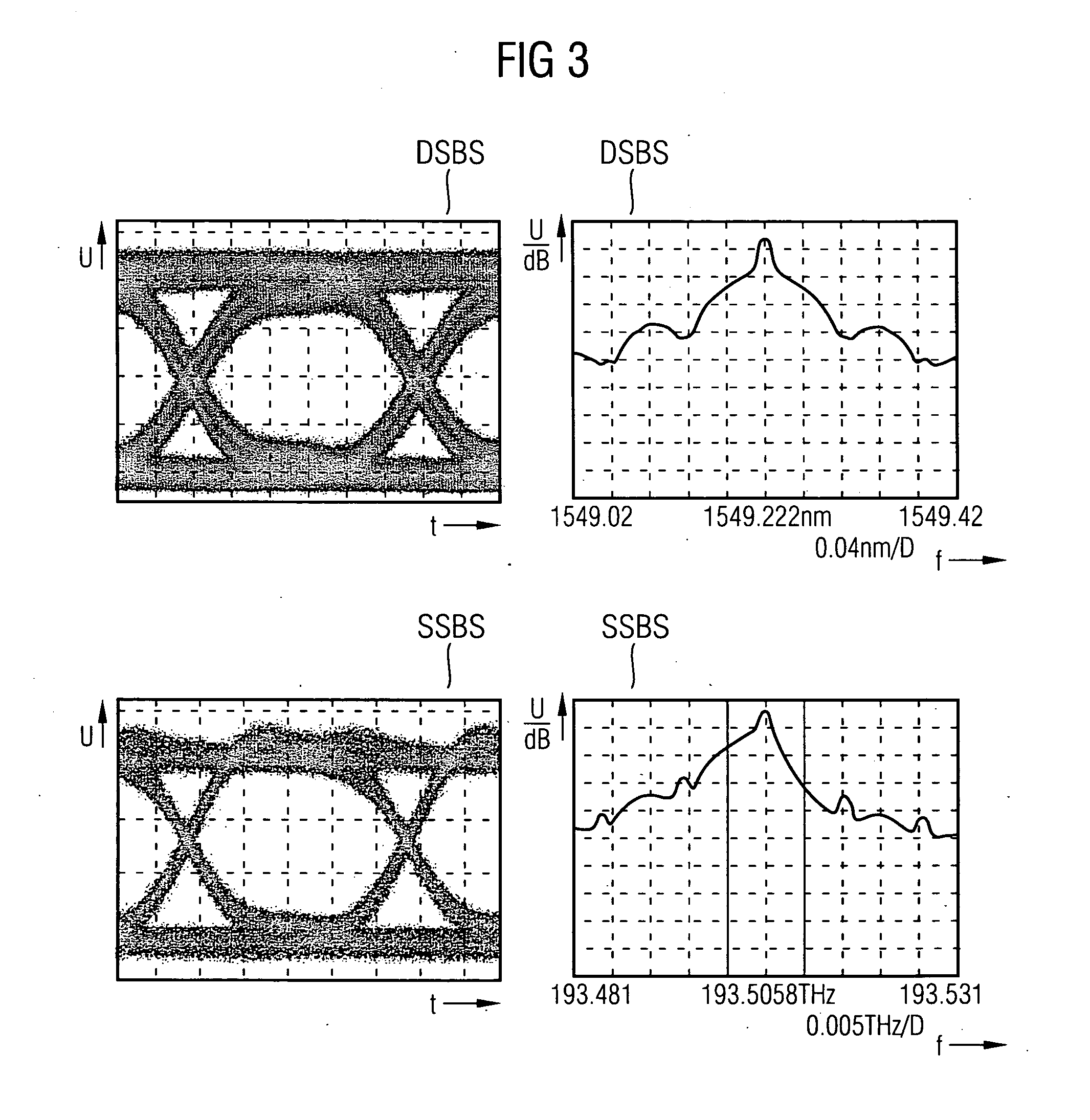Optical single sideband modulator
a single-sideband modulator and optical technology, applied in electromagnetic transmission, electrical equipment, transmission, etc., can solve the problems of information loss, high cost of arrangement, and inability to obtain a good suppression of one sideband
- Summary
- Abstract
- Description
- Claims
- Application Information
AI Technical Summary
Benefits of technology
Problems solved by technology
Method used
Image
Examples
Embodiment Construction
[0018]FIG. 1 shows a single sideband modulator comprising an optical am modulator MOD / 2,3 (amplitude modulation), e.g. Mach-Zehnder modulator, and an ODSB-OSSB converter CON / 4,5,6 (optical double sideband—optical single sideband) connected in series.
[0019] A binary data signal DS is fed to a signal input 1 of the modulator device 2, which receives a CW (constant wavelength) signal from a laser 3 and outputs an optical amplitude modulated double sideband signal DSBS. This signal is combined with a pump signal PS generated by a pump source 5 in a coupler or a filter (wavelength multiplexer) 4 and passed to a signal input of a semiconductor optical amplifier (SOA) 6, which performs the ODSB-OSSB conversion. The pump signal PS is used to maintain the SOA in the saturated region.
[0020] The transfer function of the SOA can be described approximately by: Eout(t)=Ein(t)e(1+jα)·Γ·g(Ein(t))·L-αs·L2(1)
[0021] Where Ein is the optical field at the input, Eout is the optical field at the...
PUM
 Login to View More
Login to View More Abstract
Description
Claims
Application Information
 Login to View More
Login to View More - R&D
- Intellectual Property
- Life Sciences
- Materials
- Tech Scout
- Unparalleled Data Quality
- Higher Quality Content
- 60% Fewer Hallucinations
Browse by: Latest US Patents, China's latest patents, Technical Efficacy Thesaurus, Application Domain, Technology Topic, Popular Technical Reports.
© 2025 PatSnap. All rights reserved.Legal|Privacy policy|Modern Slavery Act Transparency Statement|Sitemap|About US| Contact US: help@patsnap.com



